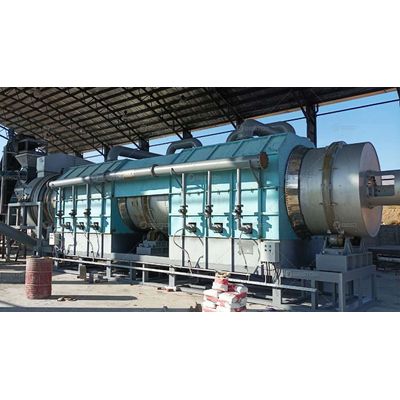

- Home
- Companies
- Beston Group Co., Ltd.
- Articles
- Biochar Equipment for Waste to Solid ...

Biochar Equipment for Waste to Solid Additive Conversion
Transforming organic waste into a functional, high-value additive has become central to sustainable waste management and regenerative agriculture. Biochar production technologies have matured significantly, allowing for the controlled conversion of biomass into a carbon-rich material with wide-ranging applications. At the forefront of this evolution is the biomass pyrolysis plant for sale, an industrial solution engineered to convert agricultural residues, forestry waste, and other organic materials into biochar—a stable, porous solid additive.
Functionality of Biochar in Soil Amendment
Biochar operates as a multifunctional additive, enhancing soil structure, water retention, and microbial colonization. Its porous microstructure and high surface area allow it to adsorb nutrients and improve cation exchange capacity. When integrated into soil matrices, biochar reduces leaching of nitrogen and phosphorus, promoting nutrient efficiency while mitigating environmental runoff.
In arid and semi-arid regions, biochar is particularly effective in improving moisture retention, reducing irrigation demand. Its ability to sequester carbon also offers a long-term climate mitigation strategy, as it locks atmospheric CO₂ into a stable form that resists degradation over centuries.
Technological Advancements in Pyrolysis Systems
Modern biomass pyrolysis systems are designed with automation, energy integration, and emissions control at their core. Reactor types range from fixed-bed and rotary kiln to fluidized-bed configurations, each suited to specific feedstocks and throughput requirements. High-performance units now feature real-time thermal regulation, PLC controls, and condensate separation systems for precise management of pyrolysis conditions.
A well-designed biomass pyrolysis plant for sale typically includes pre-treatment modules for drying and size reduction, an oxygen-limited reactor chamber, condensers for bio-oil separation, and a biochar collection system. Energy recovery systems capture syngas generated during pyrolysis, using it as auxiliary fuel to reduce external energy dependency.
Feedstock Versatility and Waste Valorization
Biochar equipment accommodates a broad range of lignocellulosic waste materials, including rice husk, coconut shells, sawdust, sugarcane bagasse, and even organic municipal waste. This flexibility enables localized resource utilization and decentralizes waste treatment infrastructure. It transforms previously discarded biomass into a marketable product, aligning with circular economy principles.
As global emphasis shifts toward waste valorization, deploying a biomass pyrolysis plant becomes both an ecological imperative and an economic opportunity. The resultant biochar can be processed further—pelletized, granulated, or blended with compost—to meet specific market requirements.
Industrial and Environmental Integration
Beyond agricultural use, biochar serves as a filtration medium in wastewater treatment, a filler in composite materials, and an adsorbent in industrial applications. In construction, it can be incorporated into concrete and asphalt mixes to improve thermal insulation and reduce embodied carbon.
Furthermore, biochar production facilities are increasingly integrated into broader sustainability frameworks. Many plants now operate under carbon-negative protocols, using carbon capture and lifecycle analysis to demonstrate net greenhouse gas reductions. This opens doors for participation in voluntary carbon markets and environmental credit trading.
Conclusion
The adoption of biochar production technologies underscores a pivotal shift in how organic waste is perceived and utilized. A biomass pyrolysis plant for sale is no longer merely a waste treatment device—it is a resource optimization platform. By converting biomass into a stable solid additive with multi-industry applications, these systems contribute to environmental resilience, economic diversification, and climate mitigation.
